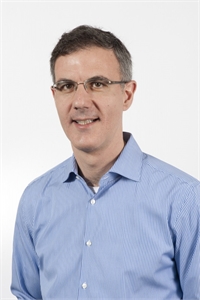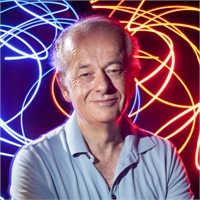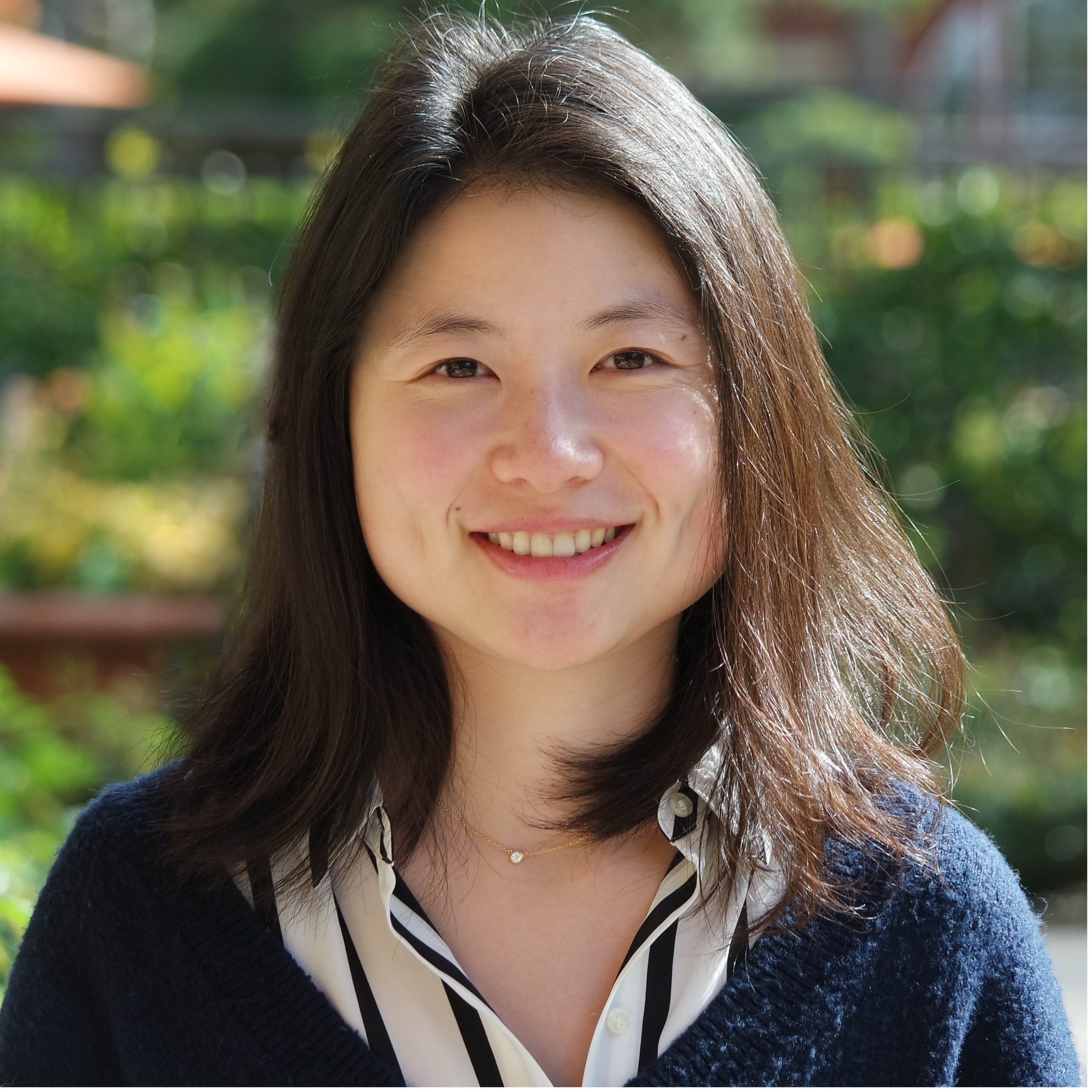Latest Past Events
Metasurface-Enhanced Optoelectronics: Directional Light Emitters and Computational Image Sensors
Analog Devices, Hubble Auditorium 1 Analog Way, WilmingtonProf. Roberto Paiella Boston UniversityPlasmonic and dielectric metasurfaces have been widely investigated as a means to tailor the wavefronts of externally incident light for passive device applications. At the same time, their direct integration within active optoelectronic devices such as light emitters and photodetectors is far less established. In this talk, I will report the design and development of plasmonic metasurfaces that can promote directional light emission and angle-sensitive photodetection from a nearby active material. These results are significant for the continued miniaturization and large-scale integration of optoelectronic devices and related systems, and as a way to create new functionalities and enable novel applications. Specifically, the use of metasurface directional photodetectors for image sensing and processing will be presented, including the demonstration of lensless compound-eye vision with ultra-wide field of view, optical edge detection for computer vision, and phase-contrast imaging.Roberto Paiella is a Professor of Electrical and Computer Engineering at Boston University with a joint appointment in the Division of Materials Science and Engineering, and a member of the BU Photonics Center. He received his BS and MS degrees from Columbia University and his PhD from Caltech. Prior to joining BU he worked as a postdoc at Bell Laboratories, Lucent Technologies. His research over the years has focused on the development and investigation of novel optoelectronic devices using bandgap engineering, plasmonics, and nanophotonics. He has served on multiple professional committees, including most recently as an editorial board member of Scientific Reports and CLEO 2022 program chair.Register for this event.
Advances in Flat Optics: From Metalenses to High-Volume Manufacturing for Consumer Electronics and Communications
Prof. Federico Capasso Harvard UniversitySince the demonstration of the generalized laws of refraction for metasurfaces and the first high performance metalenses, metaoptics has rapidly progressed from the laboratory to manufacturing, propelled by the vision that the foundries that manufacture ICs will manufacture CMOS compatible flat optics using the same semiconductor technology based on deep-UV lithography. This will impact the consumer electronics market in areas such as smart phones and wearable displays for AR/VR. Metasurfaces are now on the market through its partnership with STMicroelectronics, marking the introduction of this revolutionary optical technology in real-world devices. I will also present advances in cm scale achromatic RGB metalenses for VR by inverse design and 10 cm metalenses for space optics consisting of 20 billion metatoms. A compact and highly integrated metasurface-based inverse designed mode multiplexer that takes three single-mode fiber inputs and converts them into the first three linearly polarized spatial modes of a few-mode fiber with high fidelity the C-band (1530−1565 nm) of fiber optics will be presented. I will conclude with the report of hybrid silicon-organic electrooptic metasurface modulators that use Mie resonances for efficient electro-optic modulation at GHz speeds for free-space communications. 1. Nanfang Yu, et al. Science, 334, 333 (2011) 2. Mohammadreza Khorasaninejad, et al. Science, 352, 1190 (2016) 3. Federico Capasso, Nanophotonics, 7, 953 (2018) 4. Alan She et al., Optics Express, 26, 1573 (2018) 5. https://newsroom.st.com/media-center/press-item.html/t4458.html; https://www.metalenz.com 6. Zhaoyi Li et al. Nature Communications, 13, 2409 (2022) 7. Joon-Suh Park et al. “All-Glass, Mass-Producible, Large-Diameter Metalens at Visible Wavelength for 100 mm Aperture Optics and Beyond” CLEO 2022 8. Jaewon Oh et al. ACS Photonics 9, 929 (2022) 9. Ileana-Cristina Benea-Chelmus et al. Nature Communications, 13, 3170 (2022)Federico Capasso is the Robert Wallace Professor of Applied Physics at Harvard University, which he joined in 2003 after a 27 years career at Bell Labs where he did research, became Bell Labs Fellow and held several management positions including Vice President for Physical Research. His research has spanned a broad range of topics from applications to basic science in the areas of electronics, photonics, nanoscale science and technology including plasmonics, metamaterials and the Casimir effect. He is a co-inventor of the quantum cascade laser; he recently performed the first measurement of the repulsive Casimir force and has been involved in research on plasmonic metasurfaces aimed at engineering the wavefront of light. He is a member of the National Academy of Sciences, the National Academy of Engineering, a fellow of the American Academy of Arts and Sciences; his awards include the King Faisal Prize for Science, the APS Arthur Schawlow Prize, the IEEE Edison Medal, the Franklin Medal, the Berthold Leibinger Zukunftspreis (the future prize), the Julius Springer Prize for Applied Physics, the Jan Czochralski Award of the European Material Research Society for lifetime achievements in Materials Science.Register for this virtual event.
Label-free Optical Imaging of Living Systems
Analog Devices, Hubble Auditorium 1 Analog Way, WilmingtonProf. Sixian You Massachusetts Institute of TechnologyOptical microscopy of histochemically processed tissue is the current gold standard for disease diagnosis and research. However, many diseases can be better studied and diagnosed in living animals and patients. Driven by the need of in vivo microscopy, substantial efforts have been devoted towards label-free multiphoton imaging, which generates molecular and structural contrast based on nonlinear optical processes rather than external dyes. Despite the exceptional theoretical potential, current label-free imaging platforms are challenging for real-world clinical and biological applications. The major obstacles include the lack of flexible laser sources, limited contrast, and the challenge of acquiring and interpreting the high-dimensional dataset. In this talk, I will describe strategies we have developed to overcome these challenges. By generating and tailoring supercontinuum generated from nonlinear processes, different molecular contrasts can be visualized without aids of stains, enabling perturbation-free exploration of living systems. These capabilities further motivate the development of analytical tools for image-based segmentation and diagnosis, showing the broad potential of this label-free imaging technology in discovering new metabolic biomarkers and enabling real-time point-of-procedure applications.Sixian You is an Assistant Professor in the MIT EECS department and the Principal Investigator of the Computational Biophotonics Laboratory at MIT RLE. Her research focuses on developing imaging technologies for biomedical applications via optics, instrumentation, and algorithms. Sixian earned her Ph.D. and M.S. on microscopy from University of Illinois at Urbana-Champaign, and did her postdoc on computational imaging in University of California at Berkeley. She has been the recipient of a SCIALOG (Advancing Bioimaging) Award, Amazon Research Award, and Microscopy Innovation Award. Her work has been featured on the Cancer Research Cover, PNAS Cover, and Nature Communications Editors’ Highlight.Registration is not required for this event.



